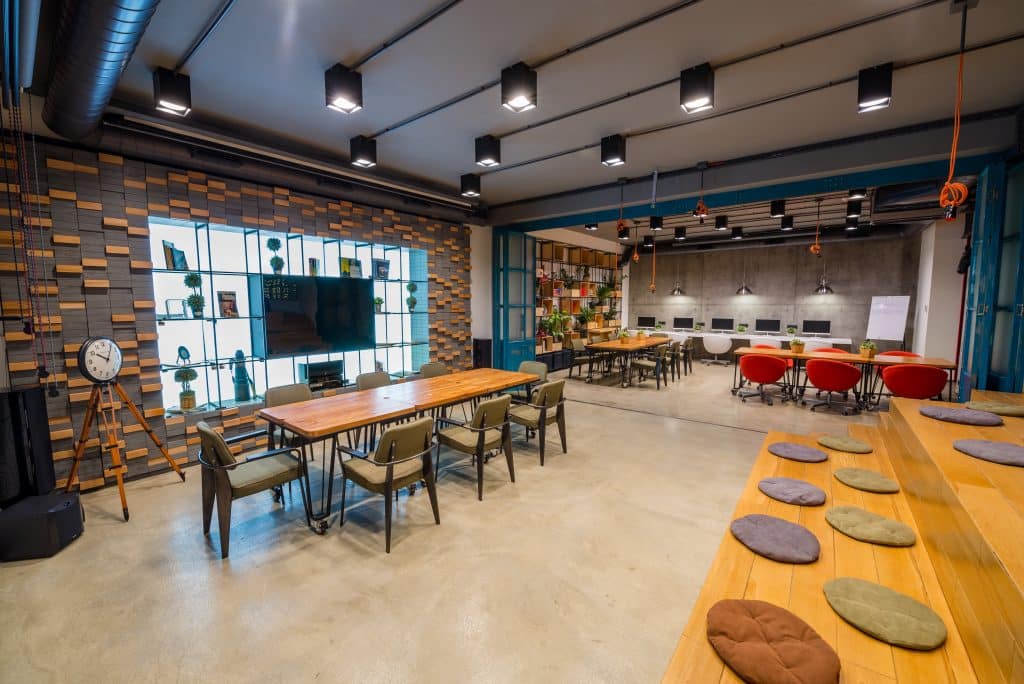Introduction
In today’s fast-paced corporate landscape, the design of meeting rooms has transcended beyond mere functionality to become a cornerstone of innovative work culture. The traditional, monotonous conference rooms are making way for vibrant and dynamic spaces, where creativity and collaboration are not just encouraged but ignited.
At the heart of this transformation is a blend of aesthetic appeal and practical utility, reshaping how professionals interact, brainstorm, and execute their ideas. According to ArchDaily, contemporary meeting rooms now emphasize aspects like modular furniture, ergonomic seating, and adaptive lighting, each playing a pivotal role in enhancing communication and fostering a creative work environment.
In this article, we will explore:
- The evolution of meeting room designs from conventional to contemporary.
- The key elements that constitute an original meeting room.
- Real-world examples of innovative meeting spaces.
Join us as we delve into the world of original meeting room designs, where every element is a testament to the future of collaborative workspaces.
The evolution of Meeting Room Design
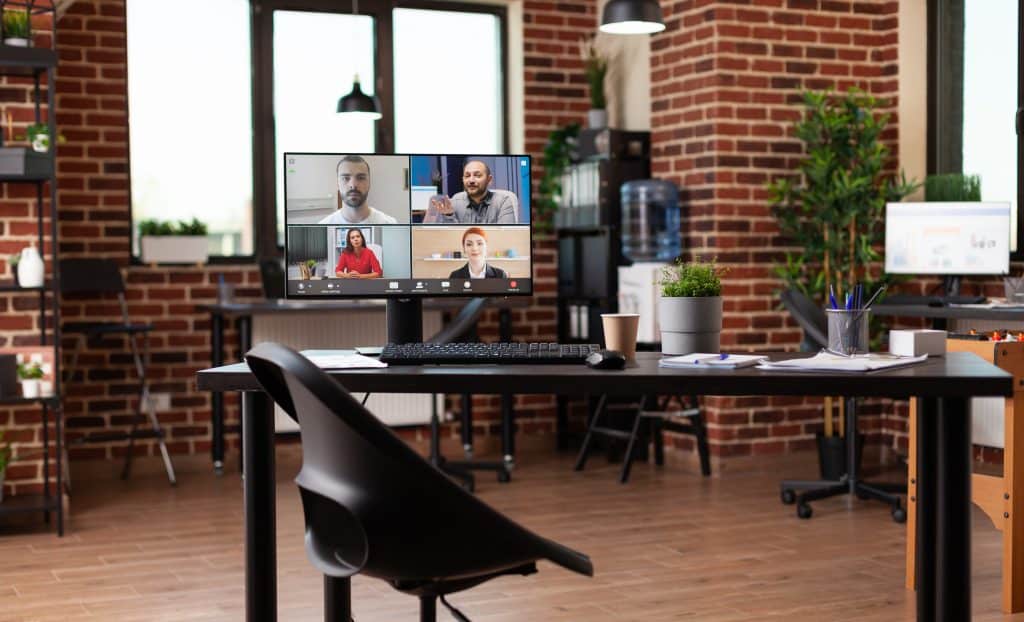
The transformation of meeting room design over the years is a fascinating journey that reflects broader shifts in work culture and architectural trends. From traditional settings characterized by rigid structures and formal layouts to contemporary designs that prioritize flexibility, comfort, and technological integration, meeting rooms have evolved significantly.
The Traditional Era
- Formal and Functional: Traditional meeting rooms were often stark, formal spaces dominated by a large central table and surrounded by chairs. The focus was on hierarchy and function, with little regard for aesthetics or comfort.
- Limited Technology: The use of technology was minimal, often limited to a projector or a conference phone. This setup reflected the work culture of the time, which was more about top-down communication rather than collaborative.
Transition to Modern Designs
- Shift in Work Culture: As companies began to value teamwork and creativity, the design of meeting spaces started to change. There was a growing recognition that environment impacts productivity and creativity.
- Integration of Technology: The rise of digital technology brought about a fundamental change. Meeting rooms started to incorporate advanced tech like smart boards, video conferencing systems, and high-speed internet.
Contemporary Meeting Rooms
- Design for Collaboration: Contemporary designs focus on fostering collaboration. According to ArchDaily, this involves modular furniture, flexible layouts, and spaces that can be easily reconfigured for different purposes.
- Ergonomics and Aesthetics: Comfort and aesthetics are now considered vital. Ergonomic chairs, adjustable lighting, and visually pleasing interiors are standard features.
- Technology-Driven: Today’s meeting rooms are equipped with state-of-the-art technology. This includes wireless connectivity, multimedia presentation systems, and tools for remote collaboration.
The Future Outlook
- Sustainable Design: There’s a growing emphasis on sustainability, with eco-friendly materials and energy-efficient designs becoming increasingly popular.
- Adaptive Spaces: The future of meeting room design lies in adaptability. Spaces that can transform according to the specific needs of a meeting are becoming more desirable.
Key Elements of Original Meeting Room Designs
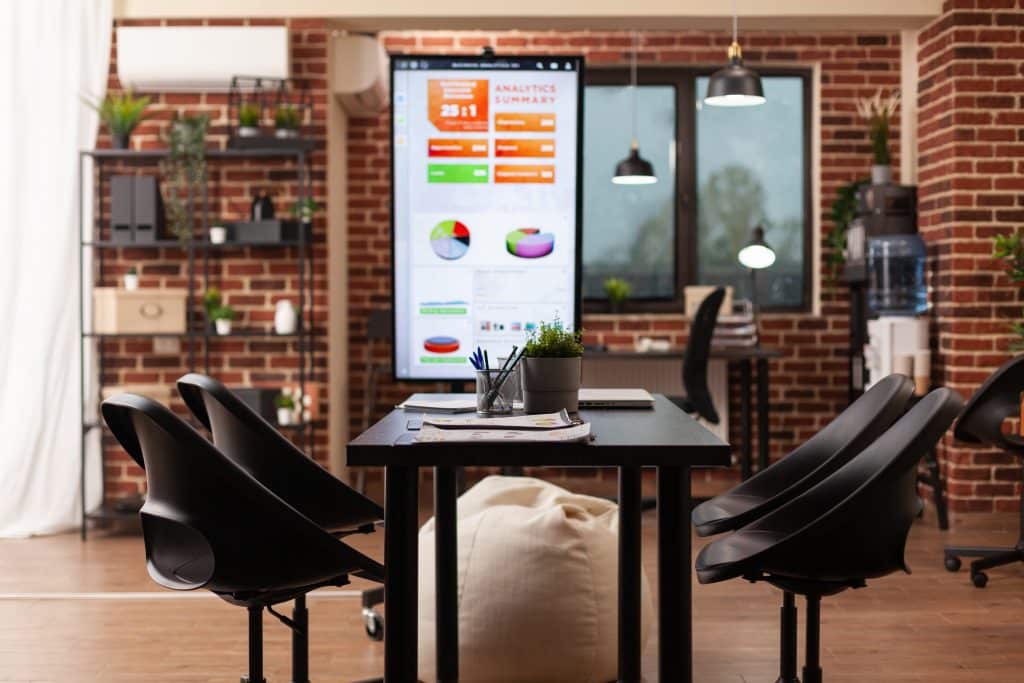
The design of a meeting room plays a crucial role in facilitating effective collaboration and creativity. There are several key elements that contribute to making a meeting room original, functional, and inspiring.
Modular Furniture and Partitions
- Versatility and Adaptability: Modular furniture and partitions stand out for their versatility. They allow spaces to be easily reconfigured for different types of meetings and group sizes, which is essential in today’s dynamic work environments.
- Customizable Layouts: According to ArchDaily, contemporary office designs increasingly favor customizable layouts. This includes movable partitions and modular furniture systems that can adapt to various needs and activities.
- Enhancing Collaboration: Modular designs facilitate a more collaborative and inclusive atmosphere by allowing everyone to engage and interact more freely and comfortably.
Ergonomic Seating and Functional Tables
- Comfort and Health: Ergonomic seating is designed to support posture and comfort, which is vital during long meetings. It reduces physical strain, thereby enhancing focus and participation.
- Functionality Meets Design: Tables in modern meeting rooms aren’t just about functionality; they also contribute to the room’s overall aesthetic. The choice of shapes and materials can greatly influence the ambiance of the room.
- Facilitating Interaction: The design of tables can impact the nature of interactions. Round or oval tables, for instance, promote a more inclusive and democratic atmosphere, while rectangular tables might suit formal presentations.
Lighting for Productivity and Creativity
- Impact on Mood and Focus: Lighting plays a significant role in setting the right mood and enhancing concentration. Optimal lighting is crucial for both comfort and productivity.
- Natural and Artificial Lighting: A combination of natural light and carefully planned artificial lighting can create an environment that is both energizing and soothing. This balance is key to maintaining focus and stimulating creativity.
- Design Element: Beyond functionality, lighting can also serve as a design element. Innovative lighting fixtures can add character to the room and make it more inviting and stimulating.
Innovative Meeting Room Examples
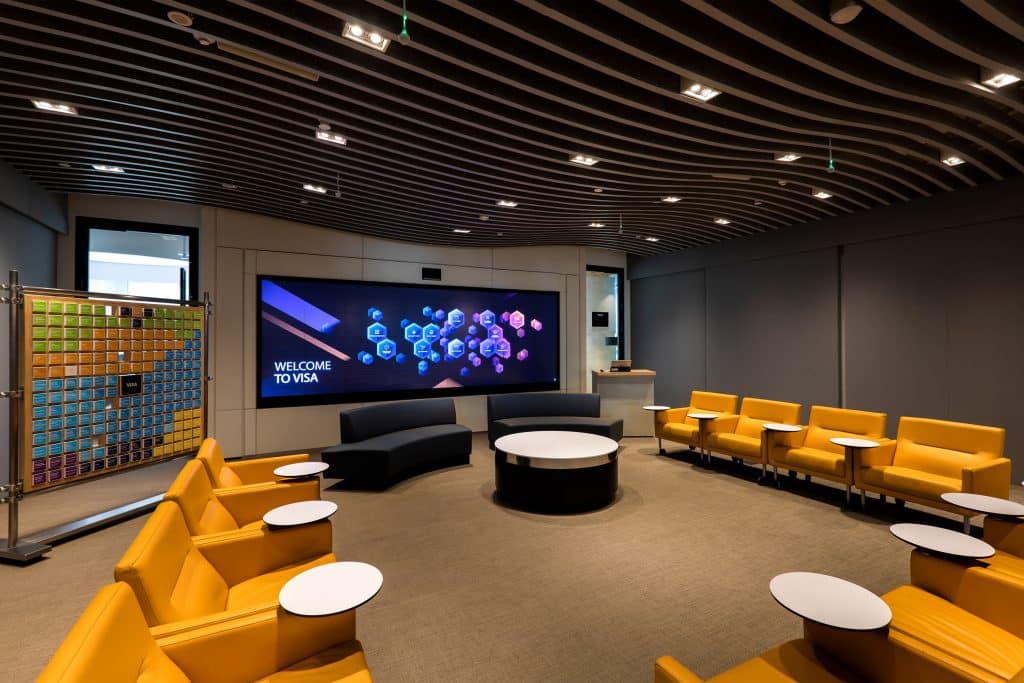
In this section, we will explore real-world examples of innovative meeting room designs. These case studies highlight the practical application of creative design principles in contemporary office spaces.
OmniRoom: Adaptable Office Spaces
OmniRoom represents the epitome of adaptable office spaces, showcasing a modular office system that aligns perfectly with the needs of a flexible and sustainable office design.
- Flexibility at Its Core: The core concept of OmniRoom is its adaptability. It offers a range of modules that can be reconfigured to suit different needs and activities in the office, as highlighted by Dezeen.
- Sustainable and Cost-Effective: OmniRoom’s design not only offers flexibility but also focuses on sustainability. It’s a more cost-effective and environmentally friendly solution compared to traditional office remodels.
- Multi-Functional Modules: The modules can be used for various purposes, from quiet workspaces to collaborative meeting areas, demonstrating how versatile design elements can enhance the functionality of office spaces.
Party Room Transformations
Drawing inspiration from the creative themes featured in Whatsmagazine, we can see how even meeting rooms can be transformed into dynamic spaces with a bit of imagination.
- Galactic Adventure Theme: Imagine a meeting room designed as a space odyssey, complete with glow-in-the-dark stars and cosmic decorations. This theme can spark creativity and make meetings more engaging and enjoyable.
- Vintage Hollywood Glam: Transforming a meeting room into a scene from old Hollywood, with black and gold décor and velvet accents, can create an atmosphere of elegance and sophistication. It’s about infusing a sense of glamour and nostalgia into the work environment.
- Customizable Themes: The key takeaway from these themes is the ability to customize meeting rooms to fit the company’s culture or the theme of the meeting. It opens up possibilities for more engaging and memorable meetings.
The Role of Technology in Meeting Room Design
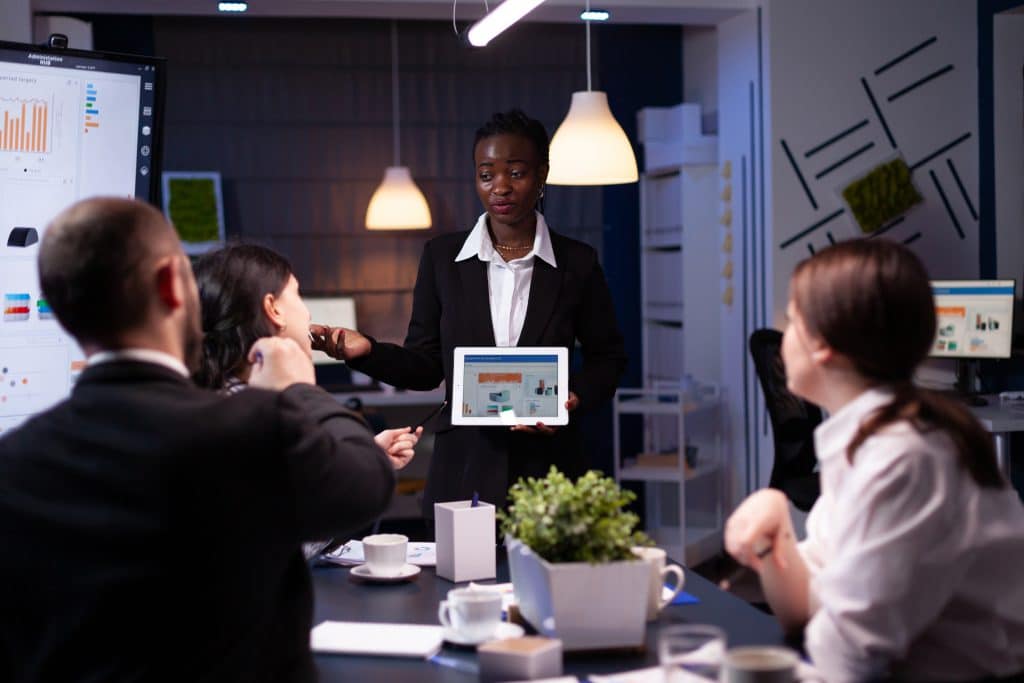
The integration of technology into meeting room designs has revolutionized the way we collaborate and communicate in professional settings. Modern technology is no longer just an add-on but a fundamental component that enhances the functionality, efficiency, and overall experience of meeting spaces.
- Seamless Connectivity: One of the key aspects of modern meeting rooms is seamless connectivity. This includes high-speed Wi-Fi, wireless charging stations, and integrated USB ports. These features ensure that everyone can stay connected and fully engaged during meetings.
- Interactive Displays and Smart Boards: Interactive displays and smart boards have replaced traditional whiteboards and projectors. They offer dynamic ways to present and share information, enabling real-time collaboration, both for in-person and remote participants.
- Advanced Video Conferencing Systems: With the rise of remote work, high-quality video conferencing systems have become essential. These systems provide clear audio and video, making virtual meetings more effective and inclusive.
- Automated Room Control Systems: Automated systems for lighting, temperature, and AV equipment control not only make meeting rooms more comfortable but also more energy-efficient. This technology allows for the creation of optimal meeting environments with minimal effort.
- Sound Management: Good acoustics and sound management technology, like noise-canceling systems and soundproofing, are crucial for maintaining focus and privacy during meetings.
The integration of these technologies has transformed meeting rooms from static spaces into dynamic, interactive environments. These technological advancements support a wide range of activities, from brainstorming sessions to formal presentations, making meetings more engaging and productive.
Conclusion
As we conclude, it’s evident that the design of meeting rooms plays a pivotal role in fostering innovation and teamwork within the modern workplace. The journey from traditional, rigid spaces to dynamic, technology-infused environments underscores a significant shift in how we value and approach collaborative work.
- From Traditional to Modern: The evolution from formal, function-focused designs to spaces that prioritize flexibility and creativity represents a broader change in workplace culture.
- Key Design Elements: Elements such as modular furniture, ergonomic seating, and effective lighting are not just aesthetic choices but strategic tools that enhance comfort, focus, and engagement in meetings.
- Technology as a Catalyst: The integration of technology, highlighted by features like interactive displays and advanced conferencing systems, has been instrumental in transforming meeting rooms into hubs of innovation and collaboration.
- Real-World Examples: Case studies like OmniRoom and themed party rooms demonstrate how innovative design can directly impact productivity and creativity in a workspace.
- The Future of Workspaces: The ongoing evolution in meeting room design reflects a commitment to creating spaces that are not only functional but also inspire creativity and foster teamwork.

